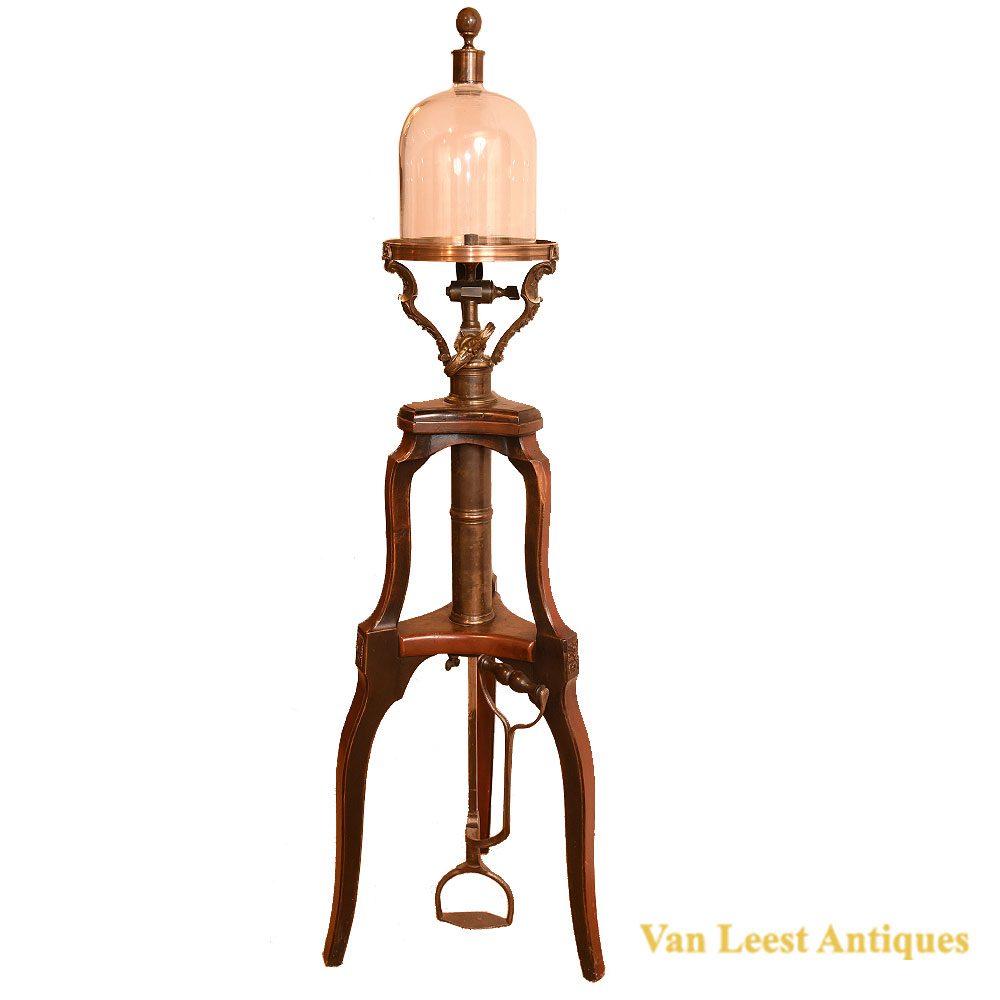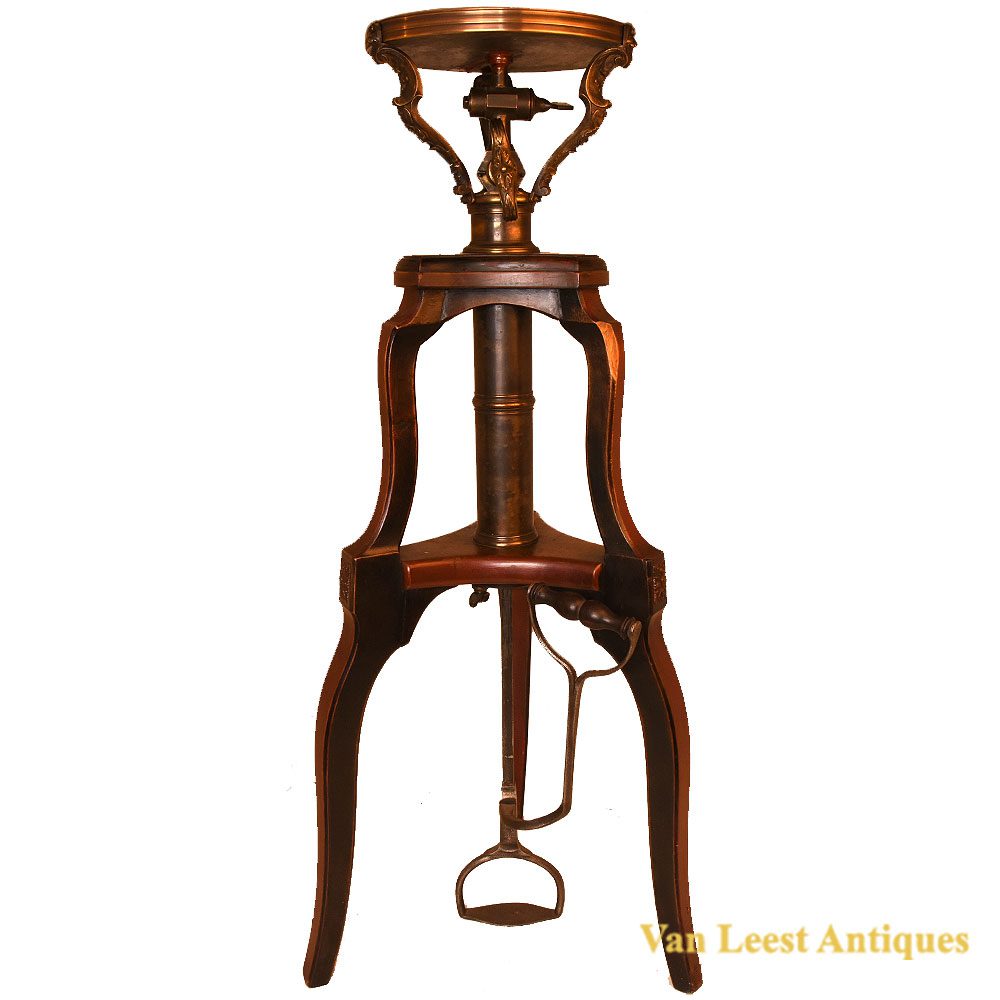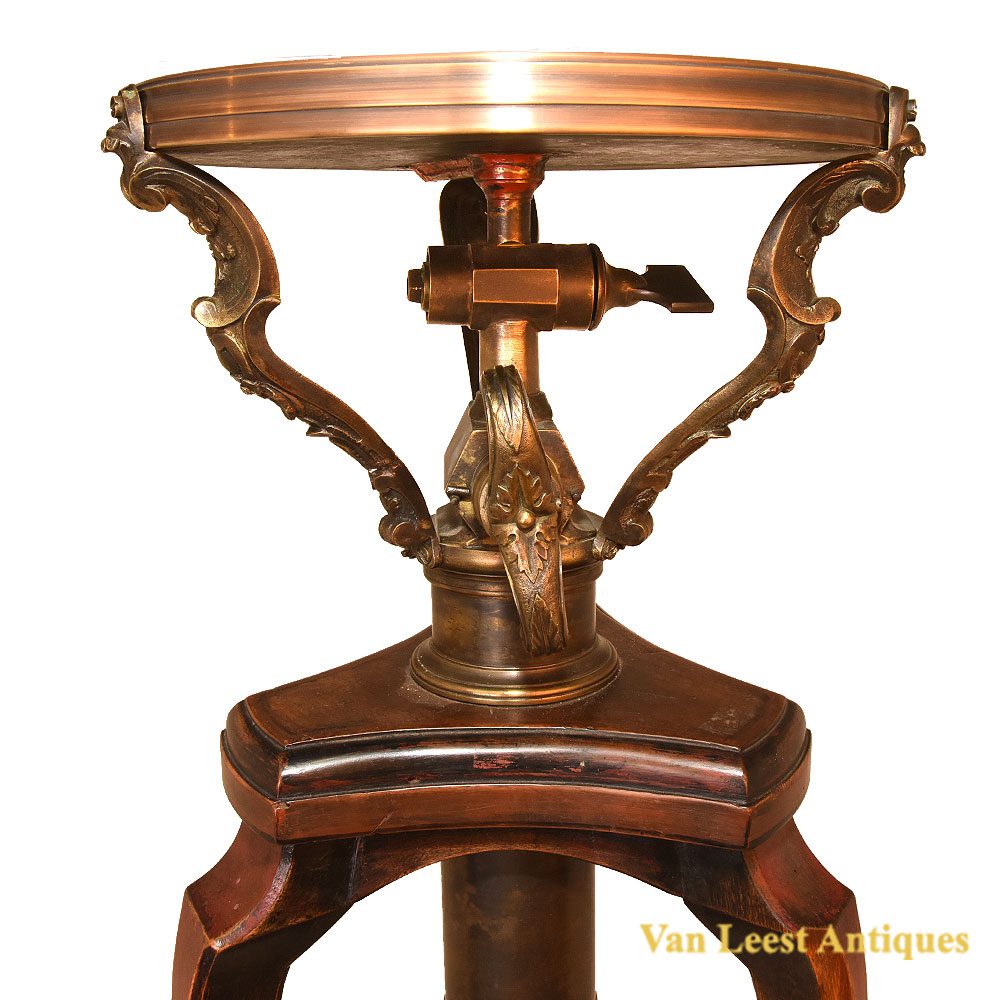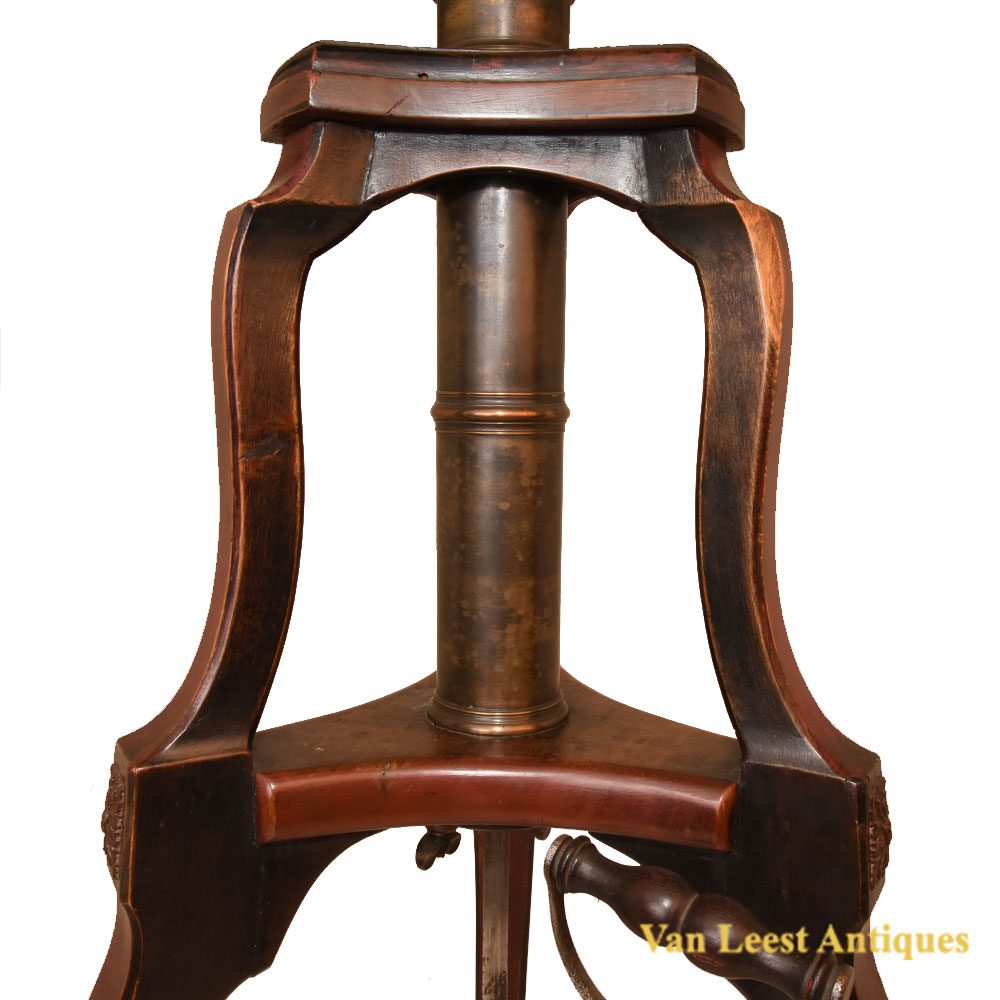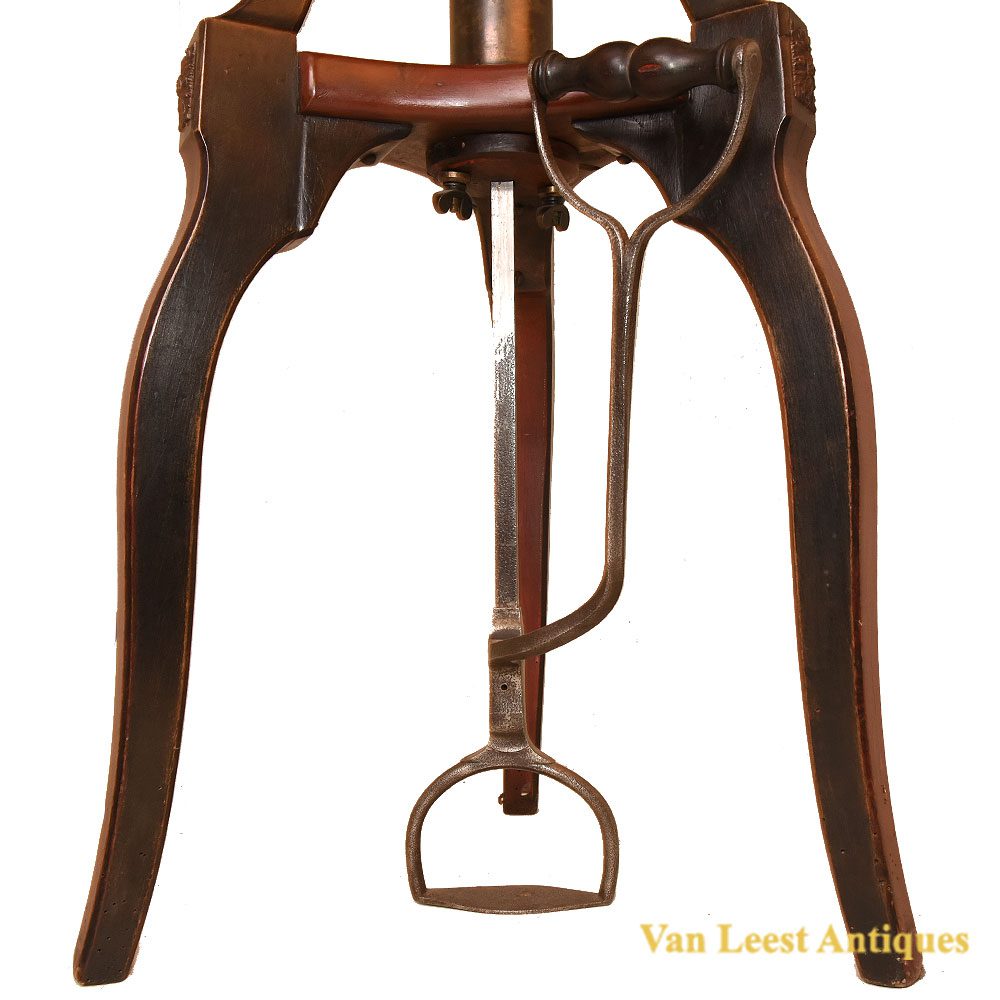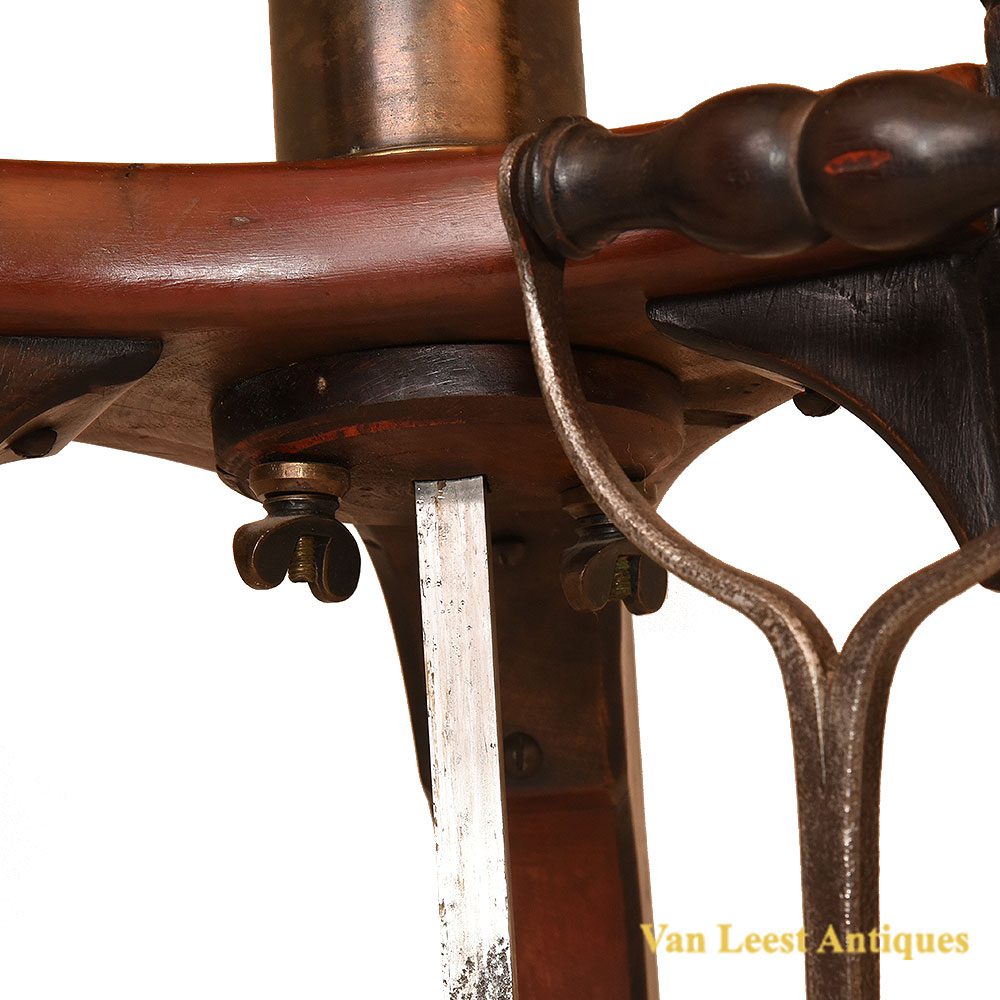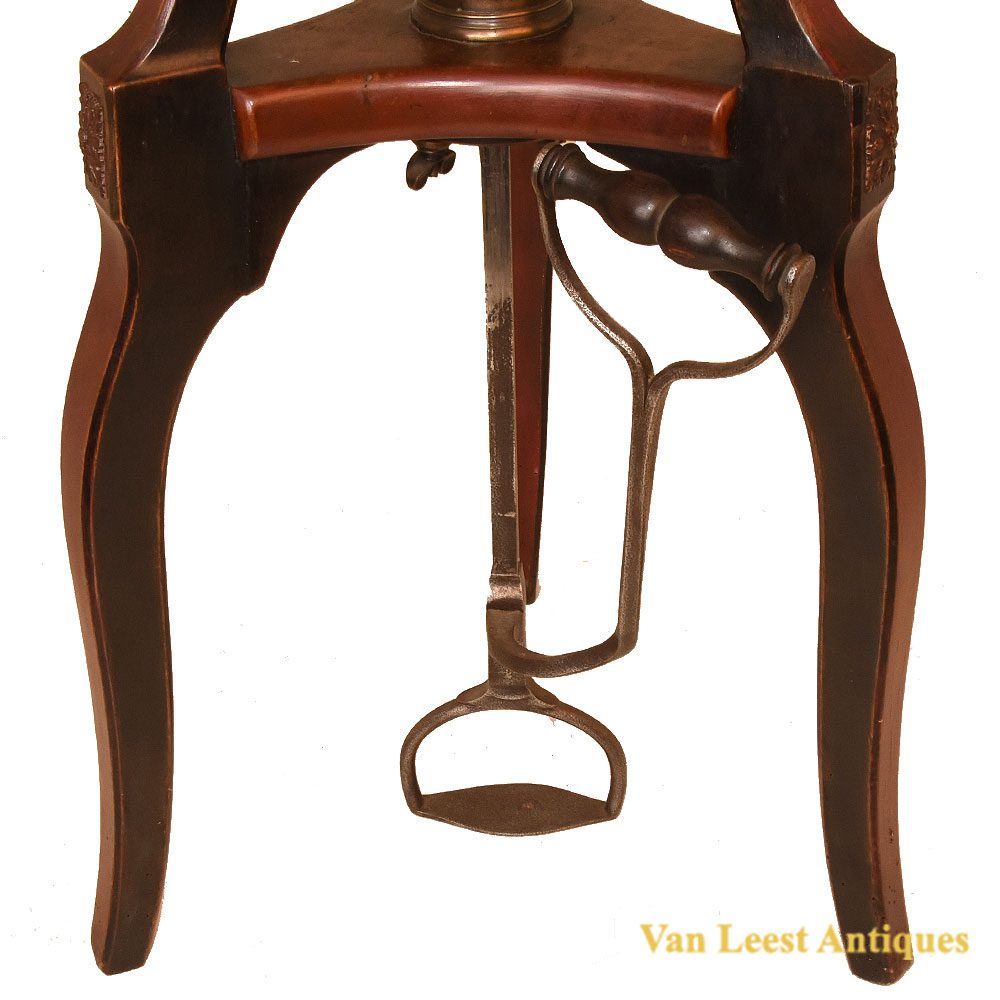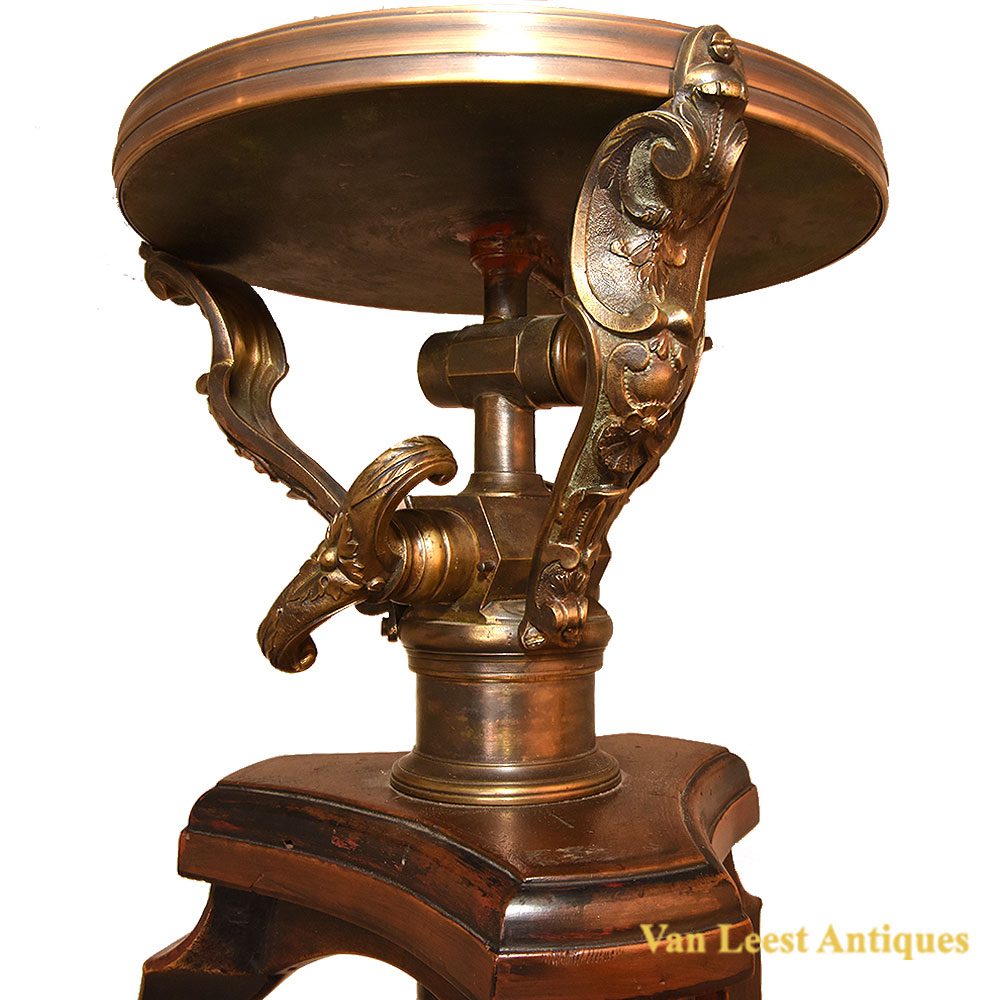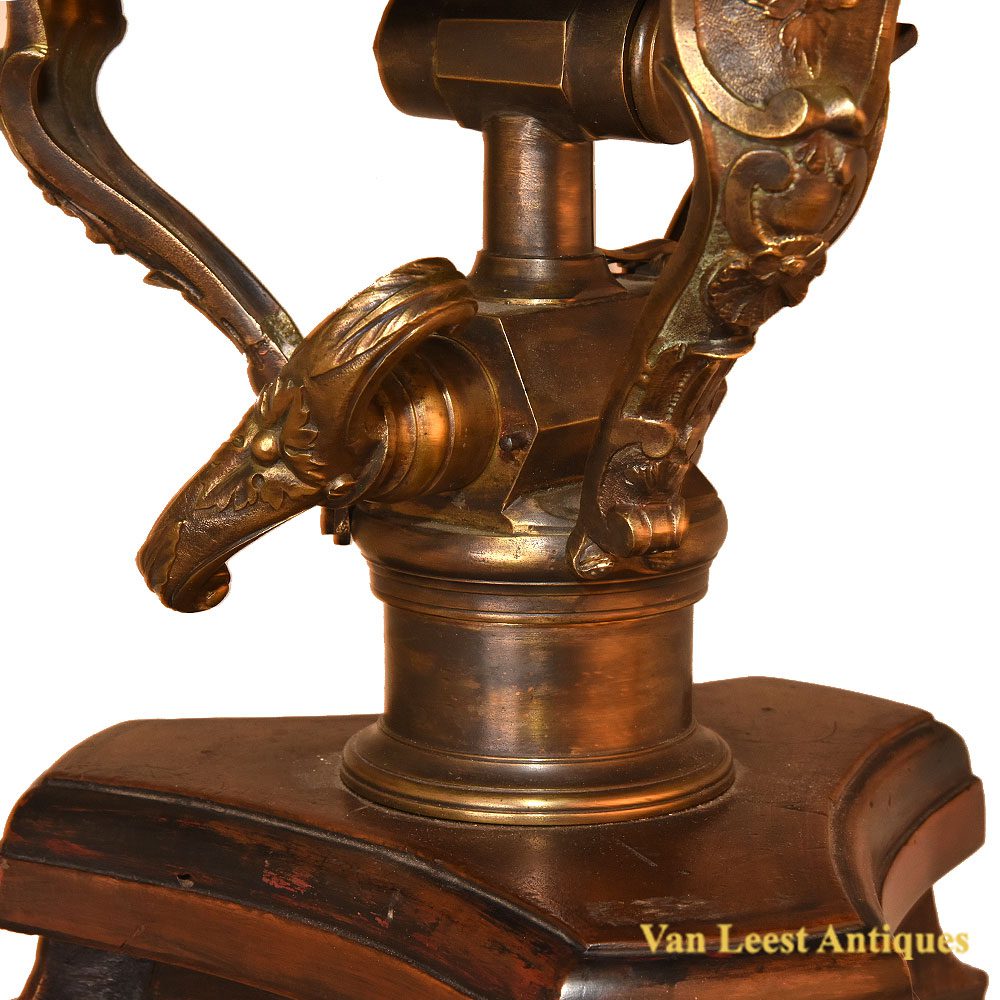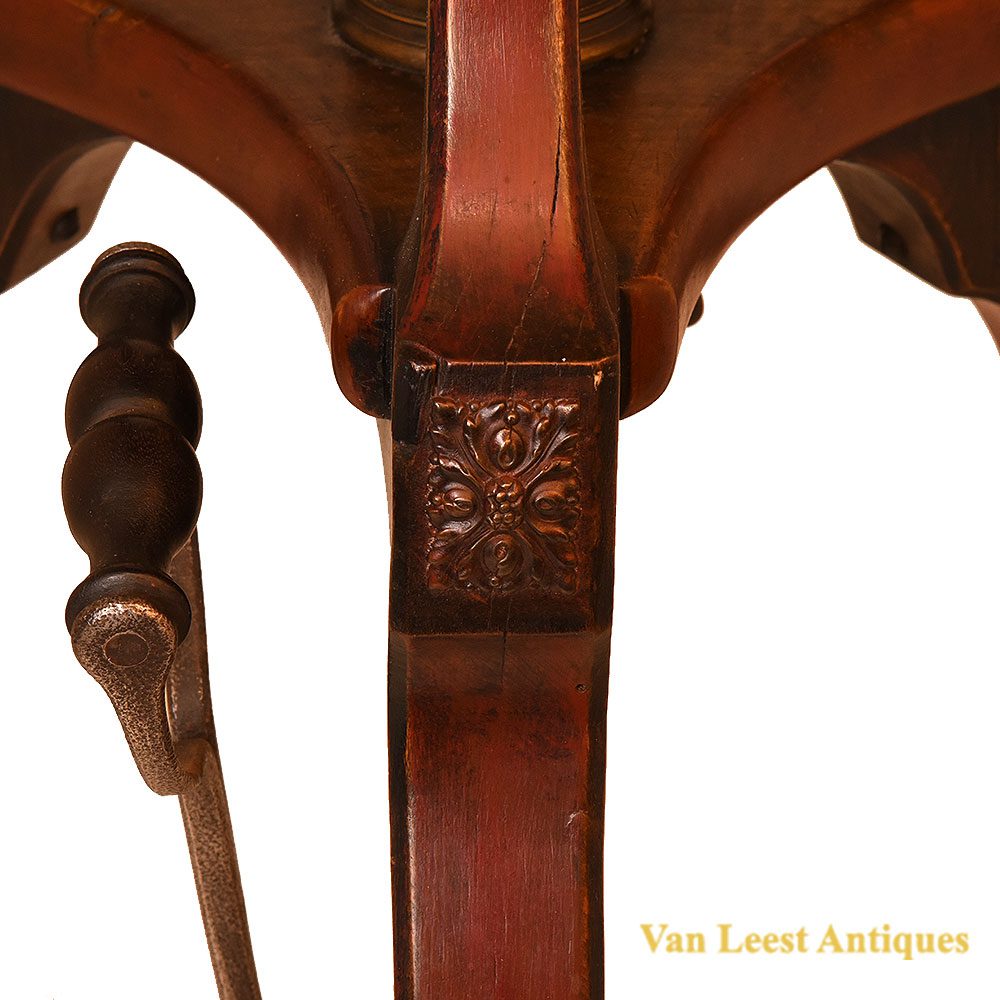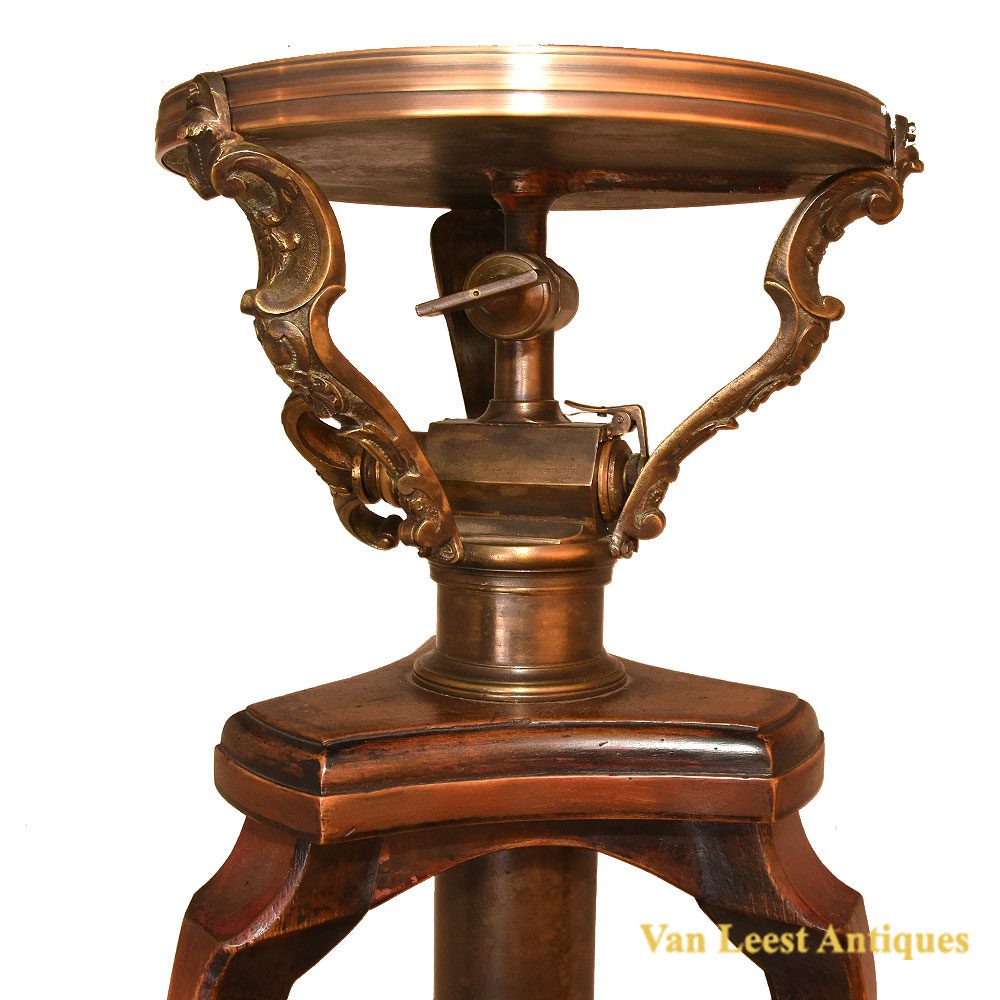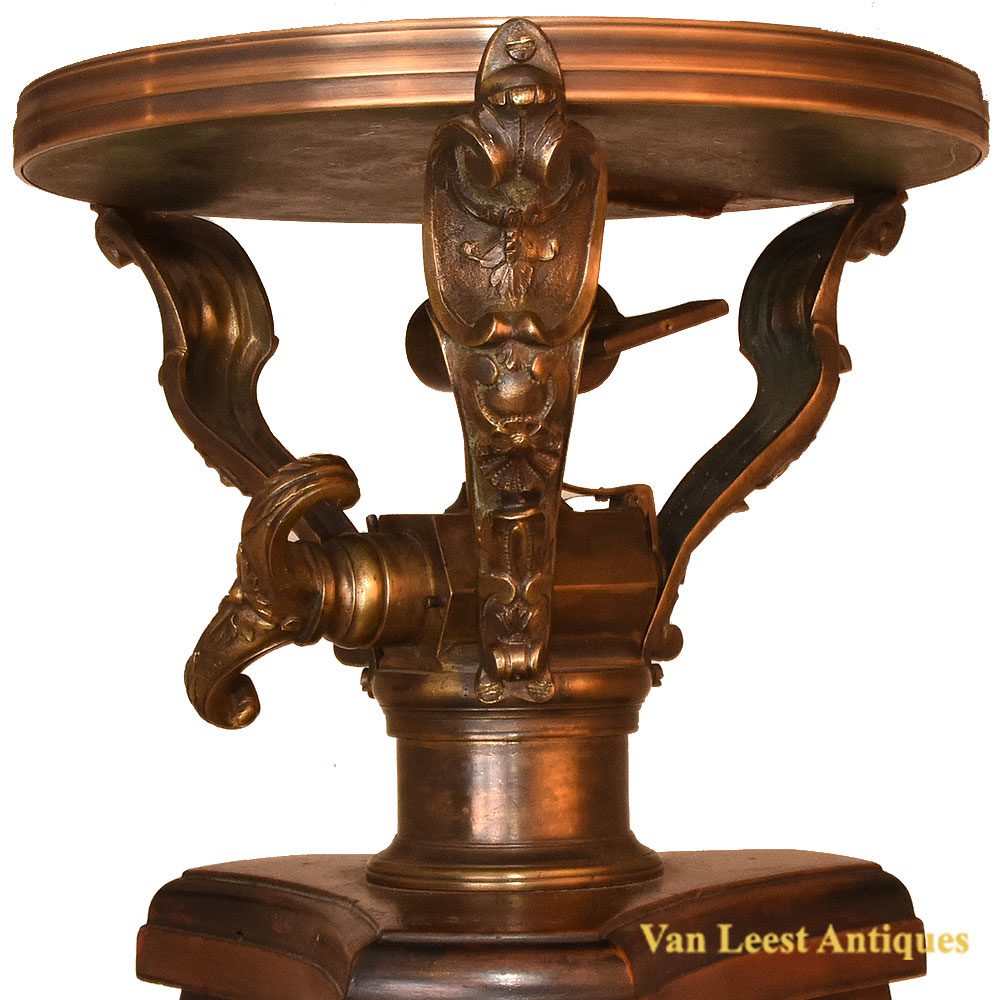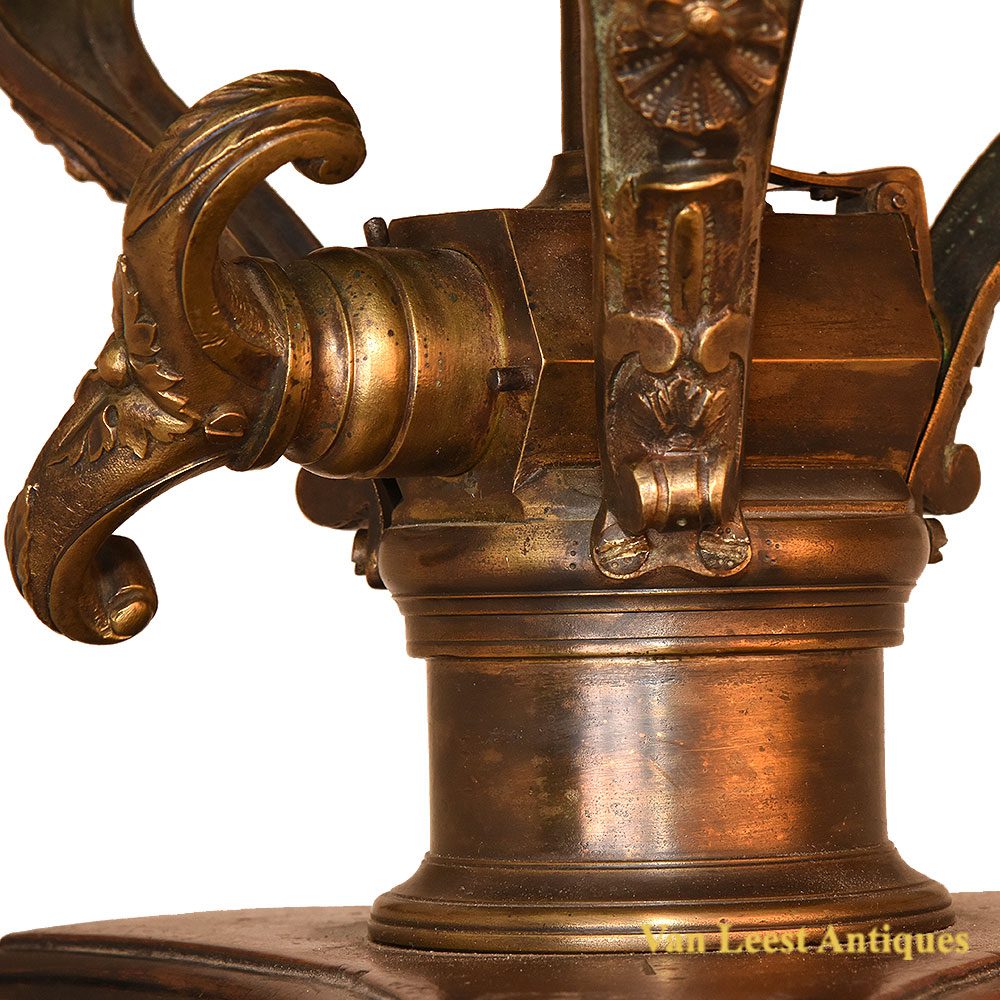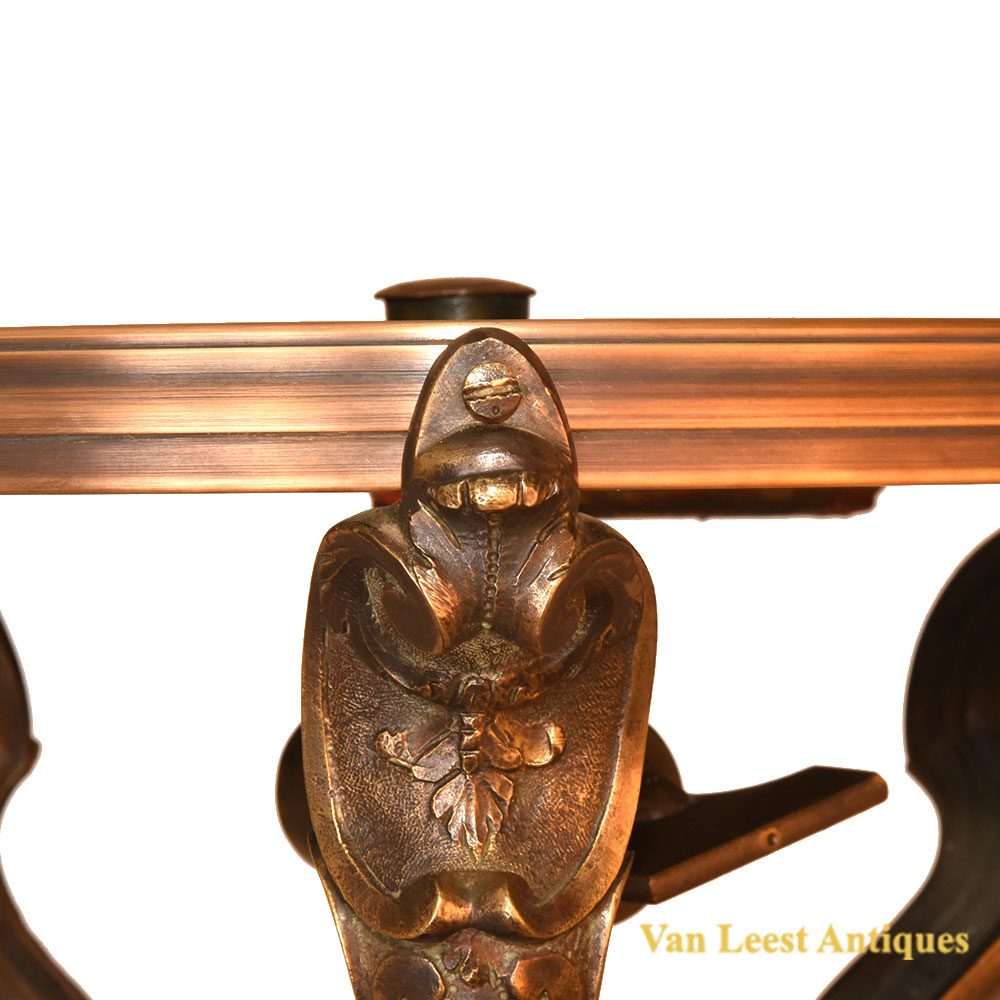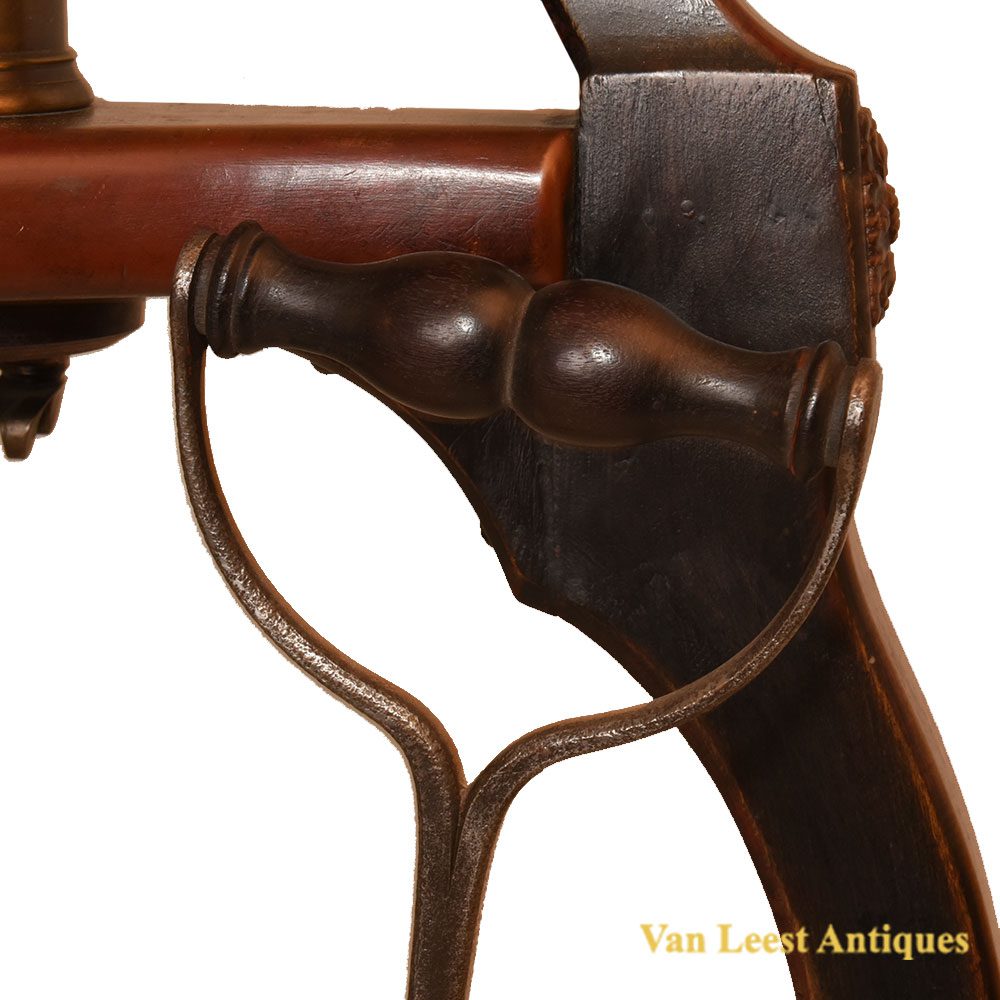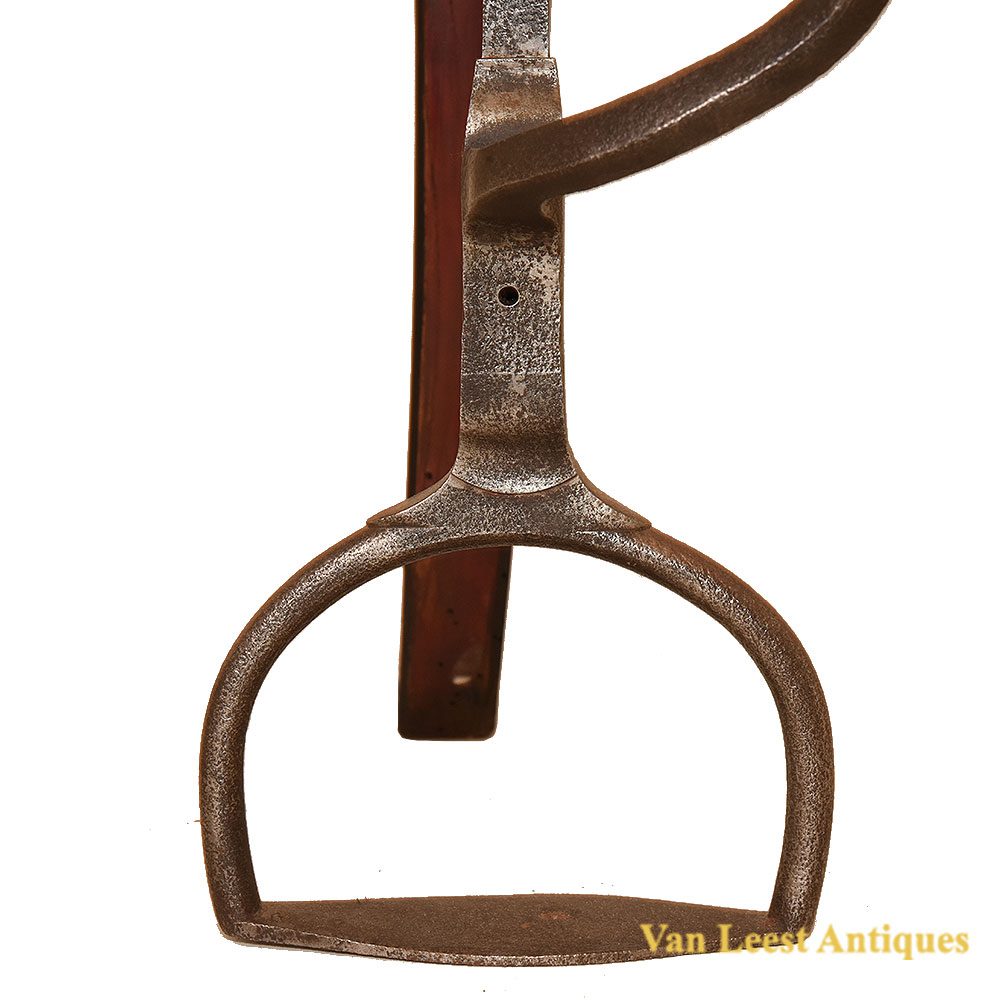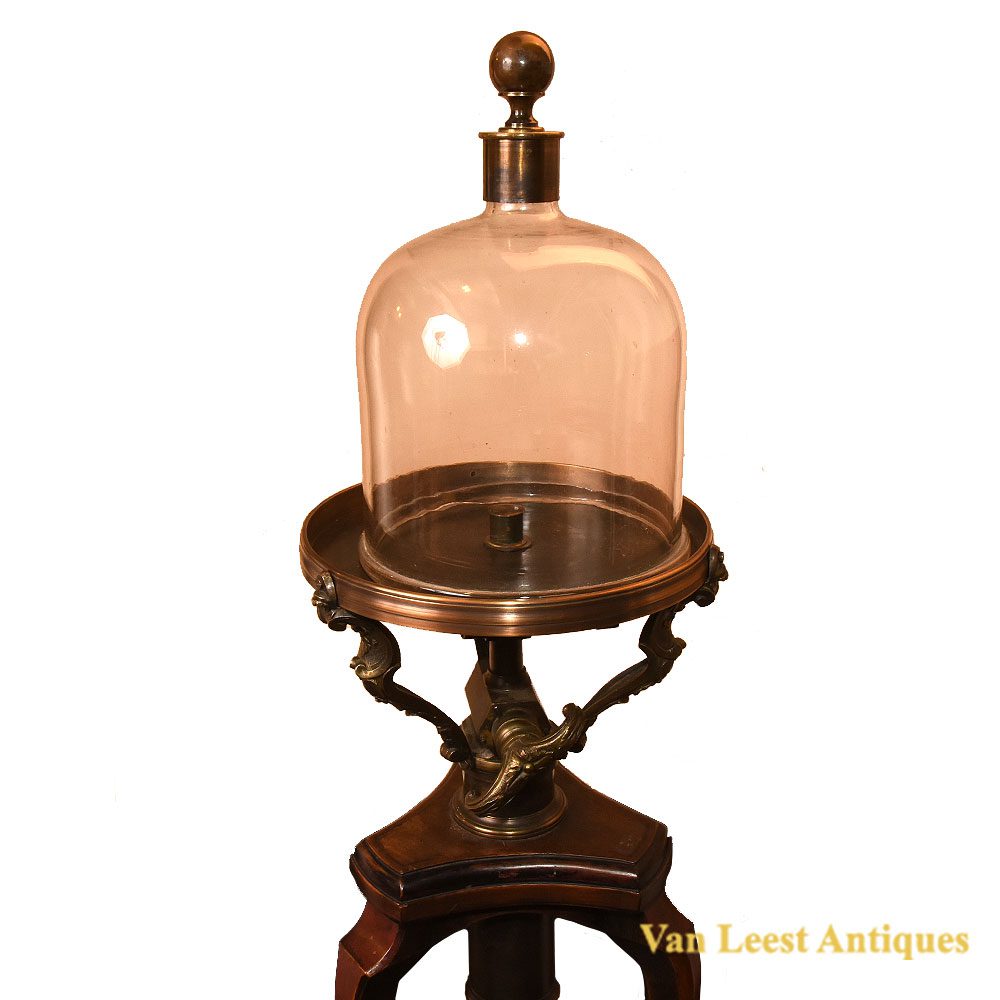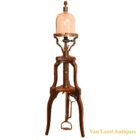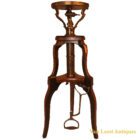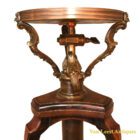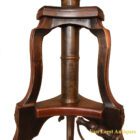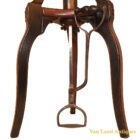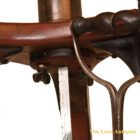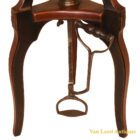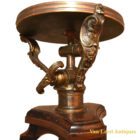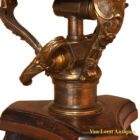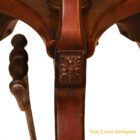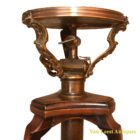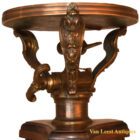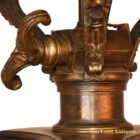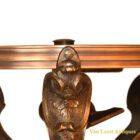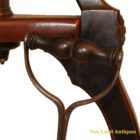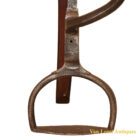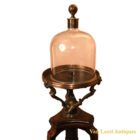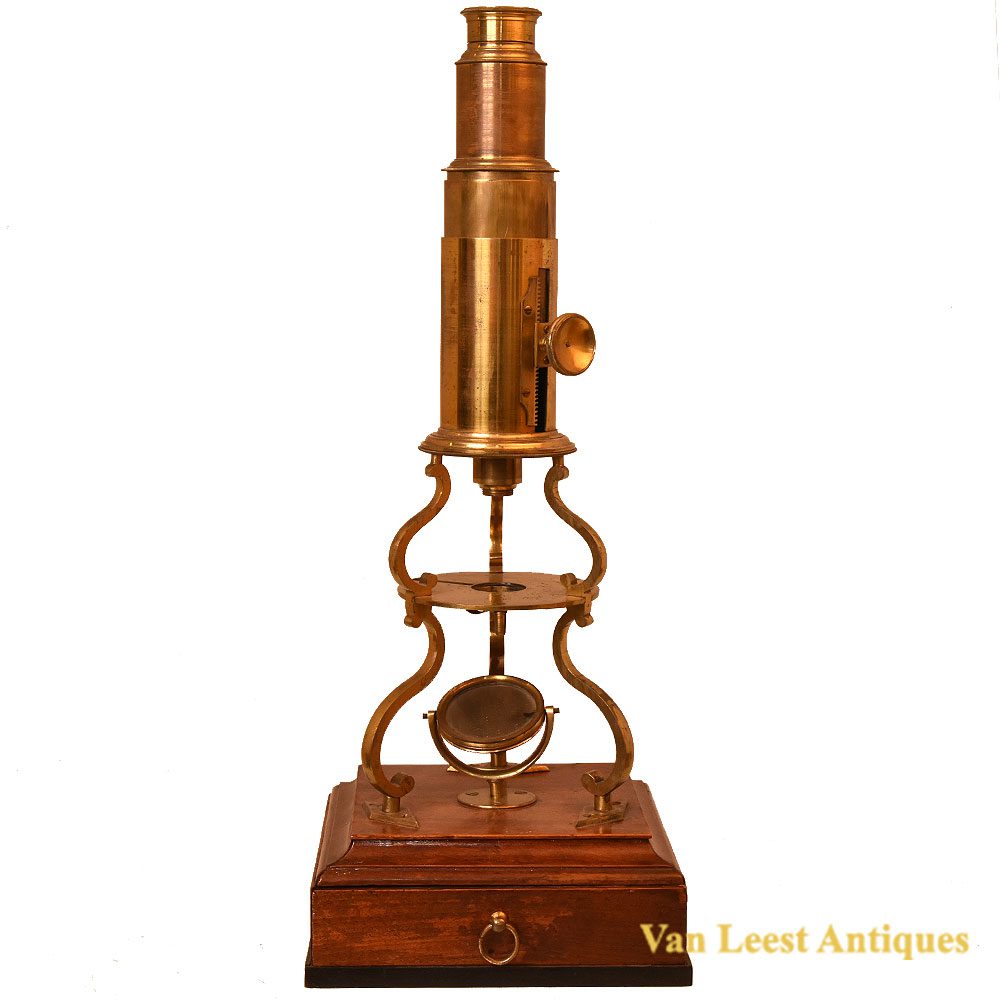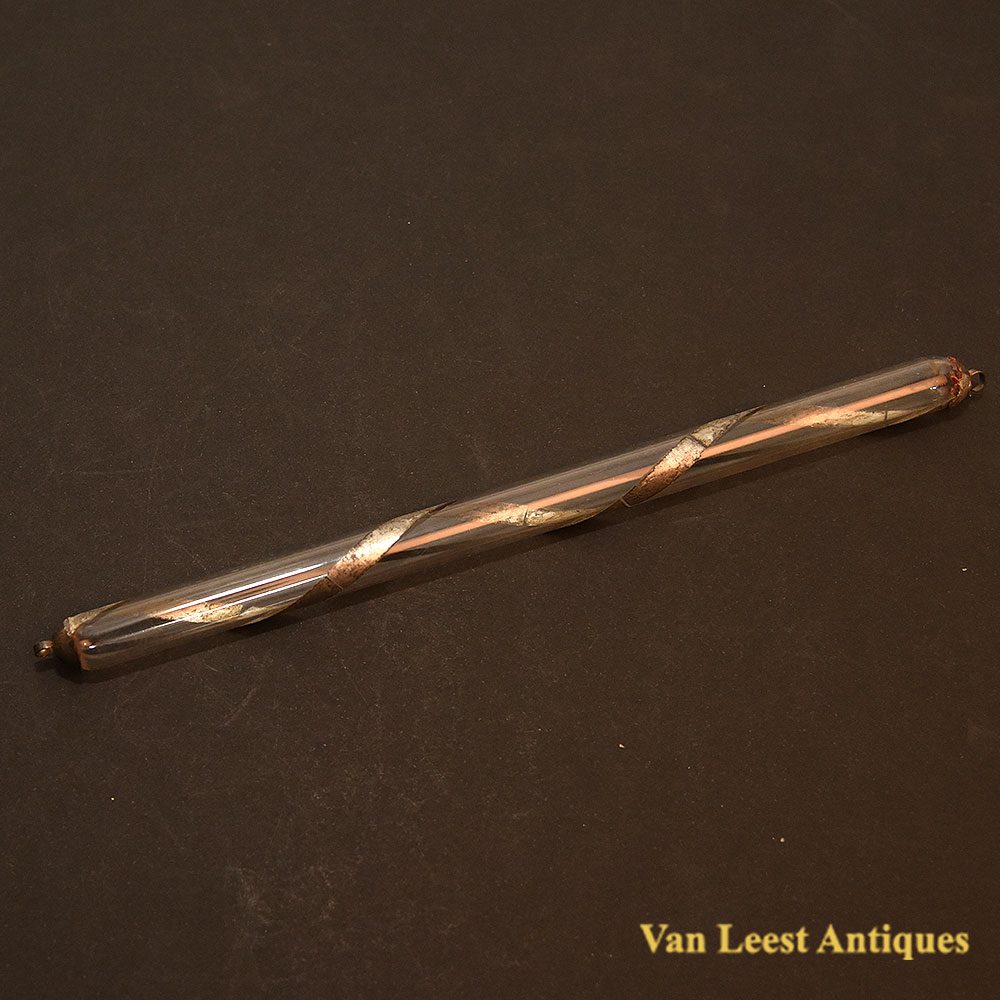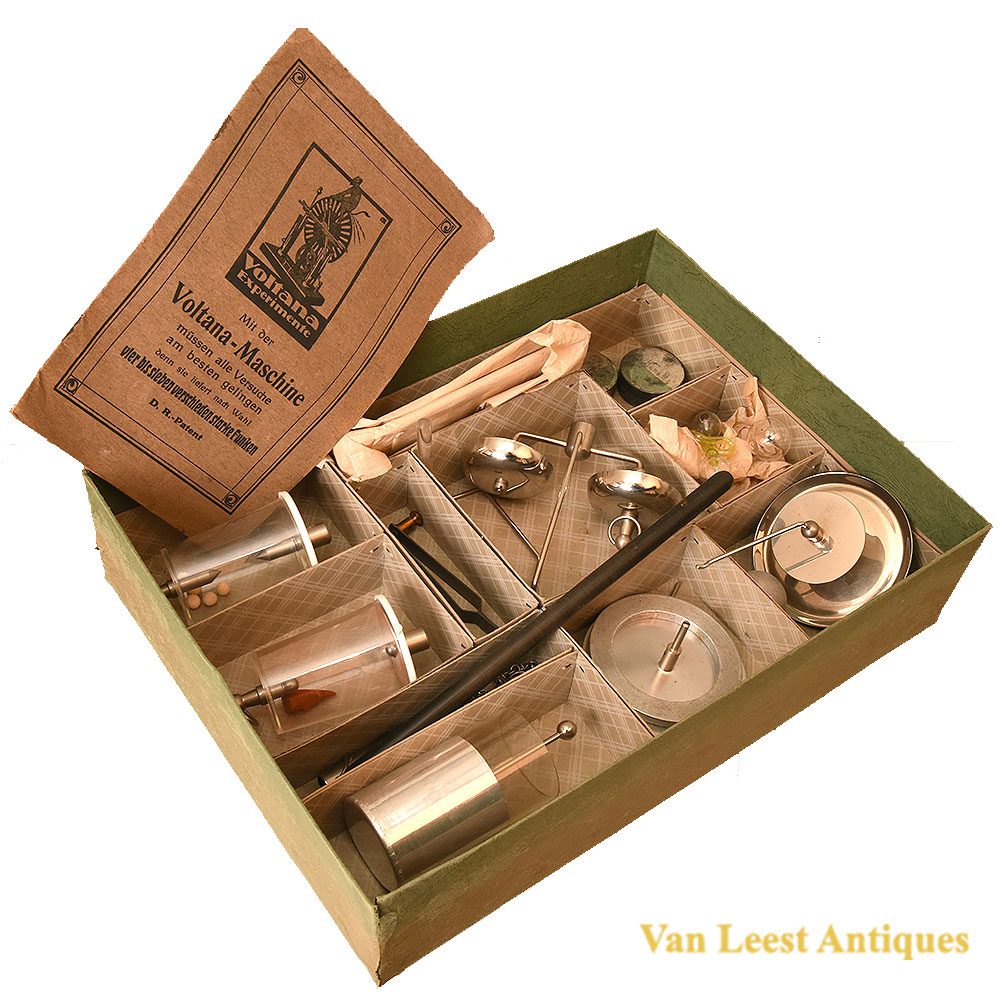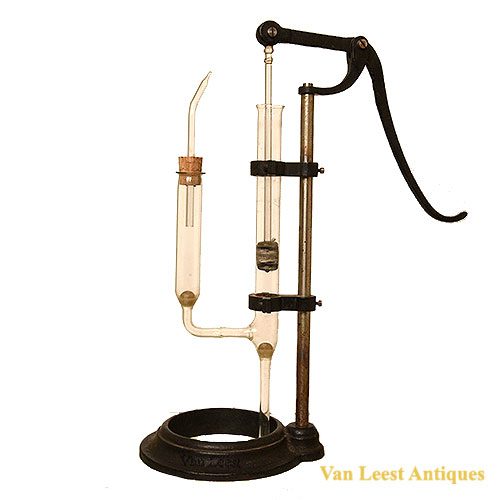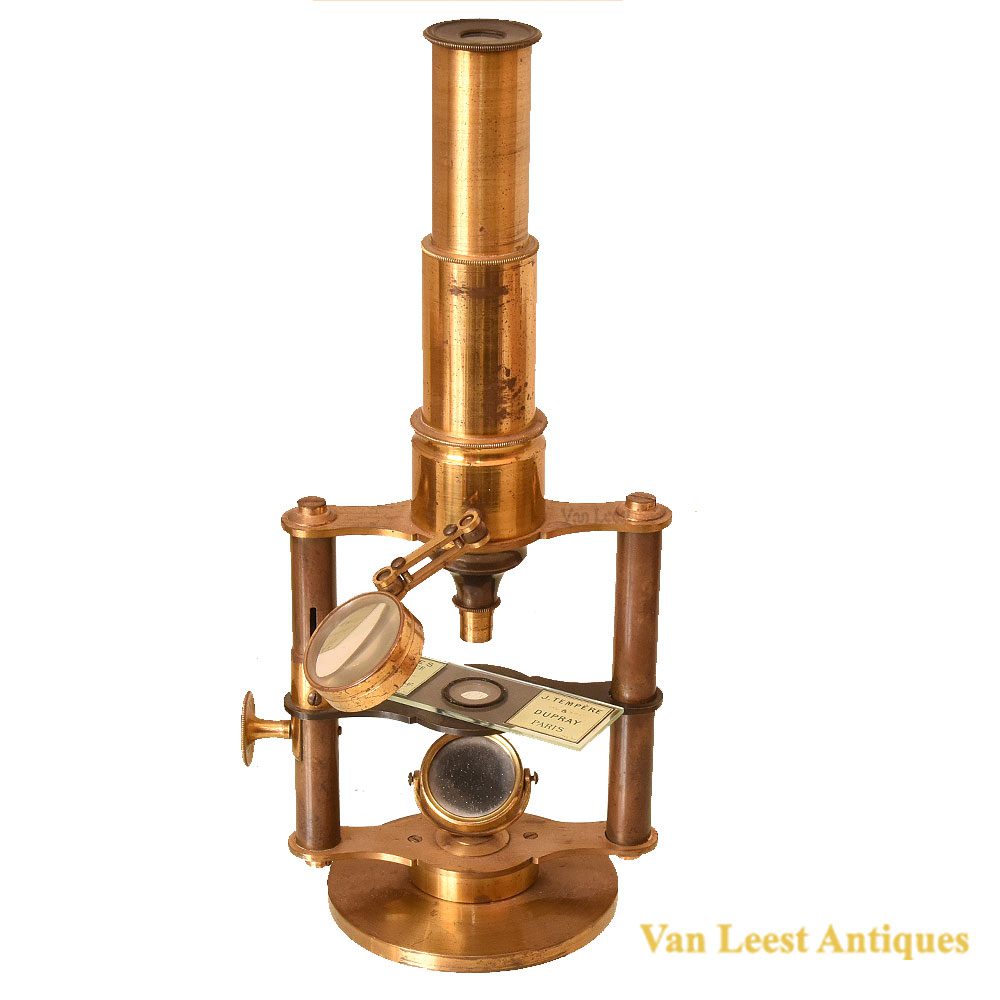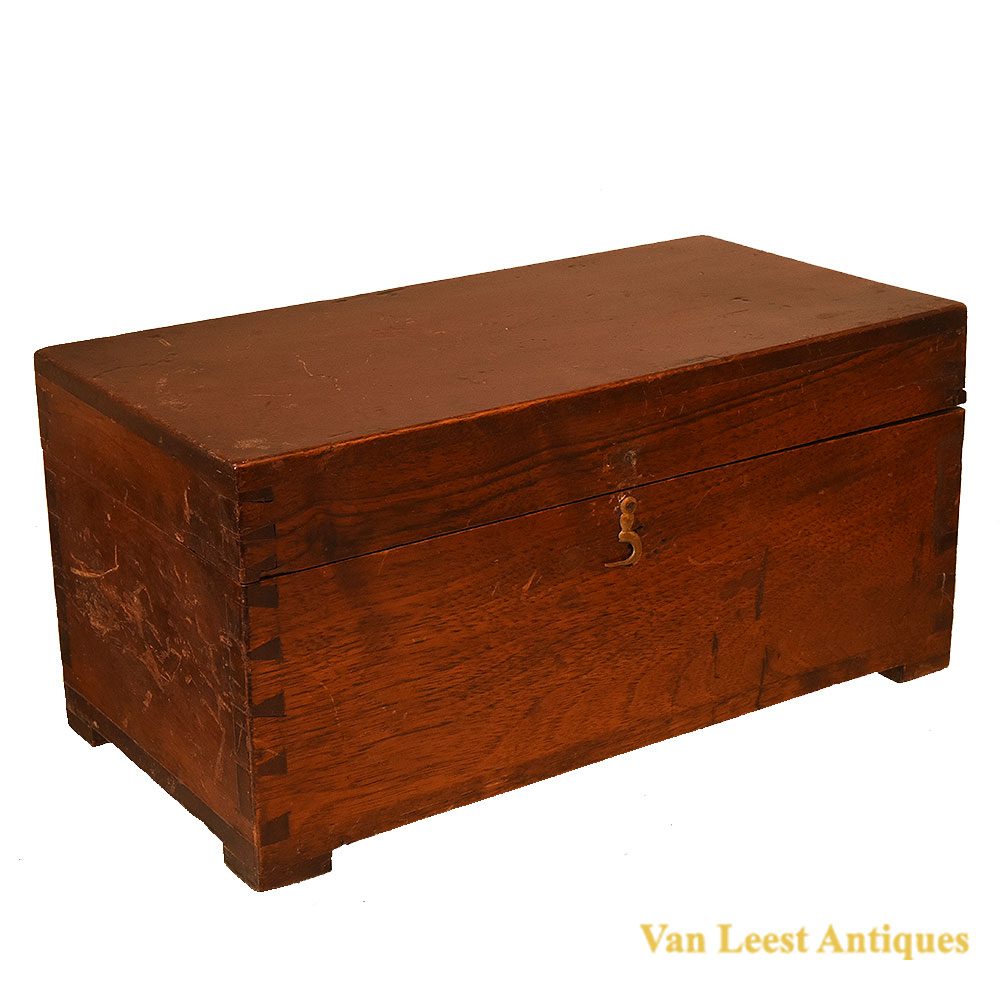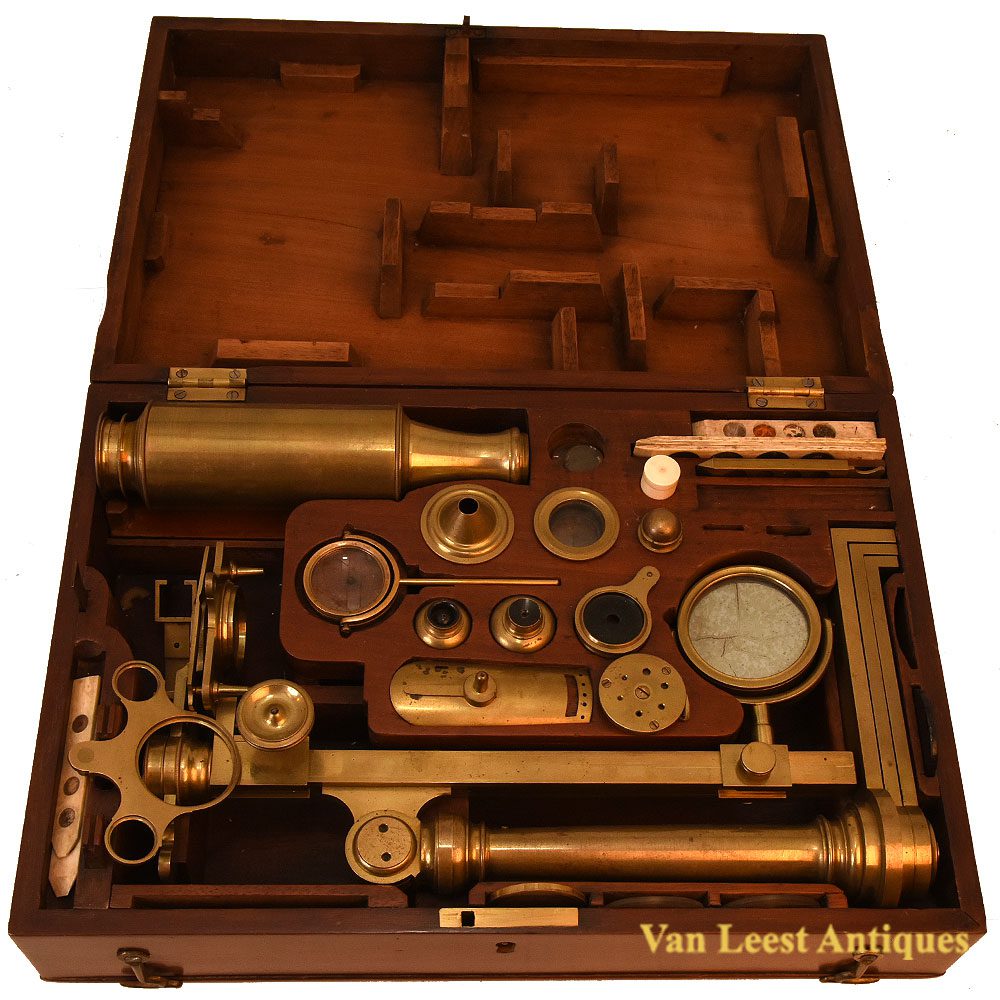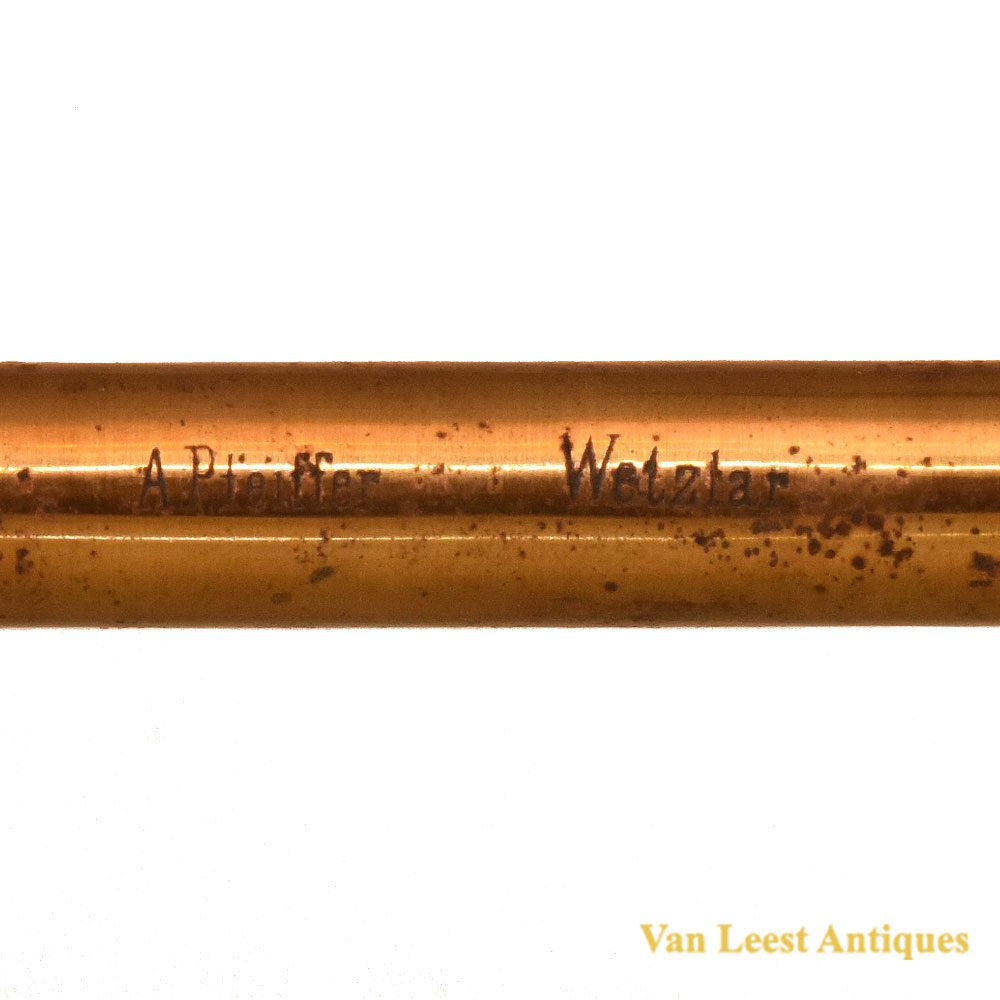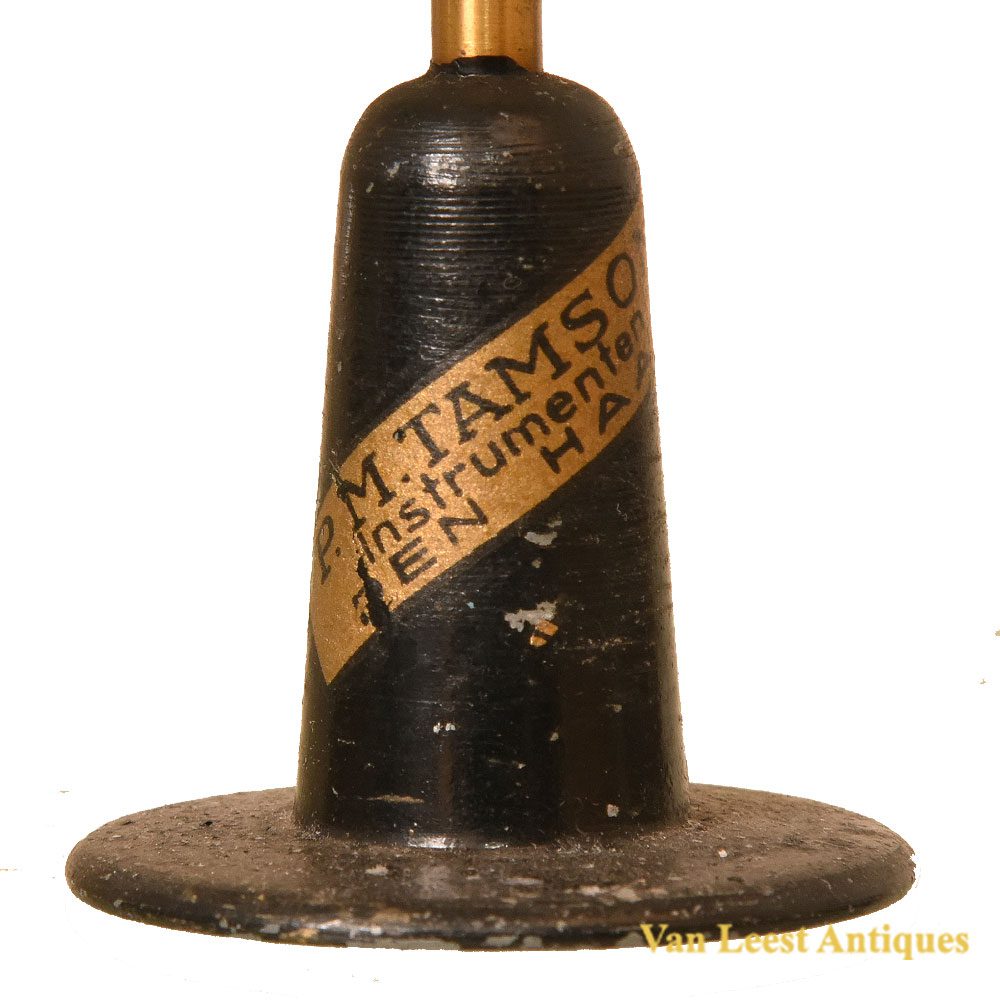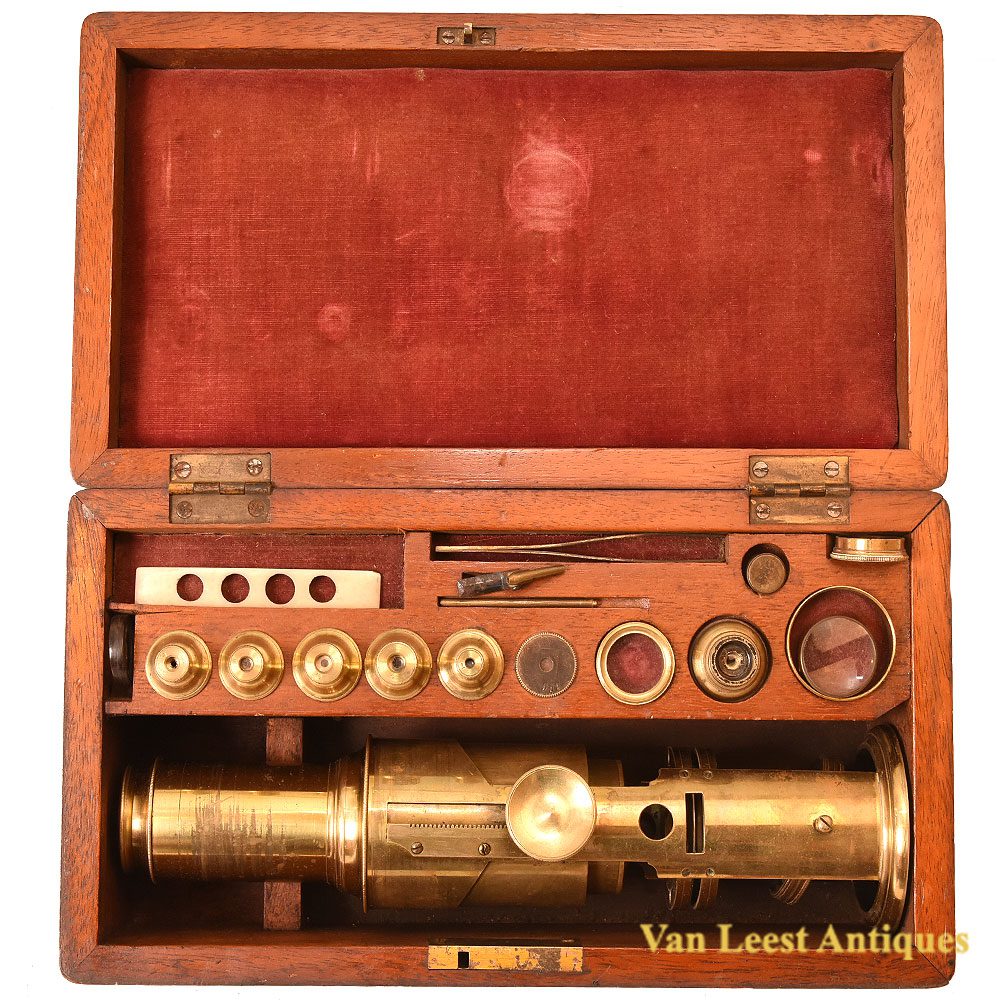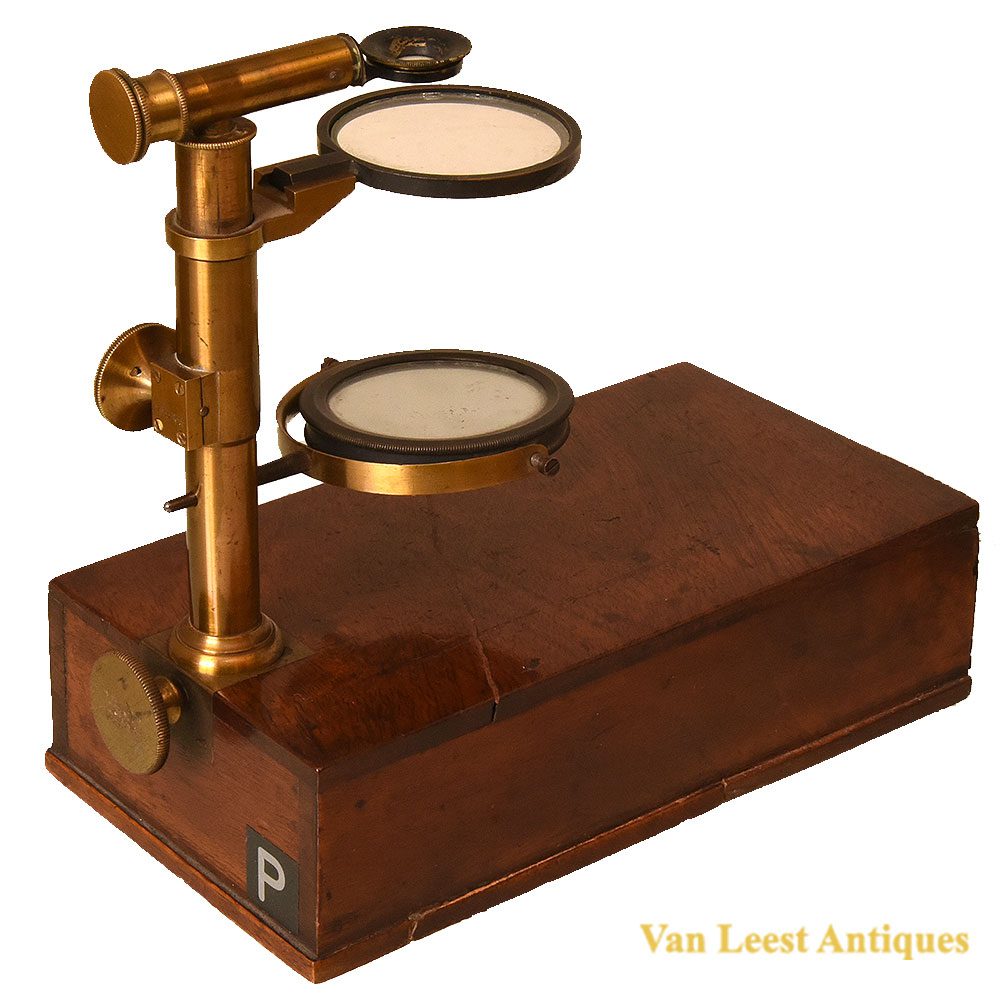18th century Abbé Nolet single barrel type vacuum pump
Sold
An 18th century Abbé Nolet single barrel type vacuum pump. It consists a single barrel supported on a high oak wooden tripod with carved floral motives. Between the legs the rod of the piston is projected. It terminates in a stirrup into which the foot was inserted to lower the piston. It was also equipped with a handle for reversing the movement. The plate is situated above the cylinder. This model of simple construction was fairly widespread in the fashionable physical cabinets and laboratories. It began to lose favour in the second half of the eighteenth century, pumps operated by a rack was easier to handle and gave better results.
Abbé Nollet was the one who popularized this type of vacuum pump as one of the great personalities of the 18th century. He gained a reputation for his spectacular demonstrations of experimenting physics, showing the ‘energy of the nothingness’. The air Pump is a pneumatic machine which is an exemplary tool of natural philosophy. The vacuum created in the upper bell of the instrument physicists could show the mysterious properties of the vacuum.
Our Air pump shows many similarities with the two air pumps of Abbé Nolet of the Musée des Arts et Métiers in Paris. The woodwork and especially the floral decorative metalwork are of the same maker. For more information see two pneumatic machines of Abbé Nolet: Pneumatic machine one and pneumatic machine two.
After preliminary attempts of Otto von Guericke and Boyle and the improvements contributed by Huygens, Papin, Hooke and Hauksbee the vacuum pump became an item of commercial production with Jan van Musschenbroek. By 1725 there were two principal types of air pumps which were reproduced over a long period without any significant changes. The difference lay basically in the manner of operating the piston: by means of a rack or stirrup.
Height: 135 cm.
